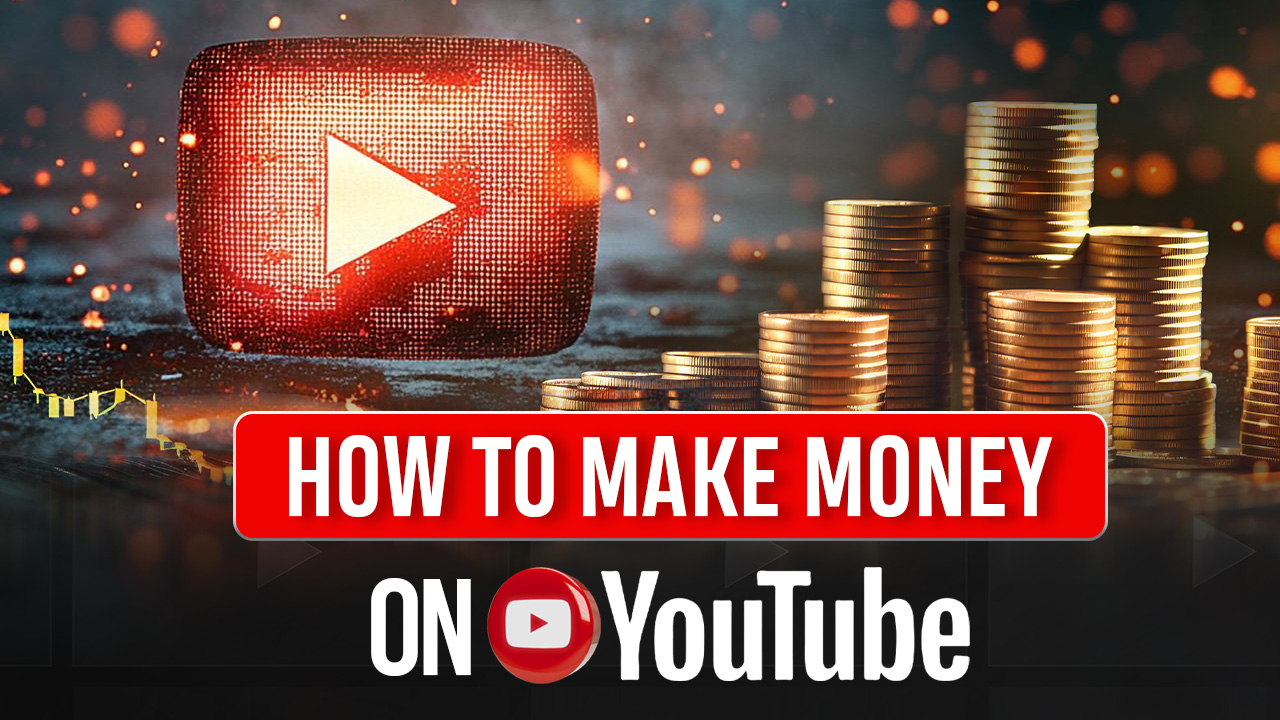In today’s digital world, YouTube has become much more than just a platform for watching videos.
It’s a space where creativity meets opportunity, and people from all walks of life are finding ways to earn money.
If you’re a beginner looking to make money on YouTube, this guide will take you through everything you need to know, from setting up your channel to diversifying your income streams.
Step 1: Setting Up Your YouTube Channel
The first step on your YouTube journey is creating a channel. But before you hit the ‘create’ button, it’s crucial to think about your niche. What kind of content are you passionate about? Whether it’s vlogging, gaming, tech reviews, or beauty tutorials, selecting a niche that you genuinely enjoy will make creating content much more enjoyable and sustainable.
Setting up the channel is simple once you’ve decided on your niche. All you need is a Google account, and with a few clicks, your YouTube channel is live. From here, it’s important to maintain consistency in your branding — from your channel banner to your video thumbnails, everything should represent your channel’s identity.
Step 2: Understanding YouTube’s Partner Program
You’ll need to join the YouTube Partner Program (YPP) to start earning on YouTube. This program allows creators to monetise their videos through ads, but there’s a catch — you need at least 1,000 subscribers and 4,000 watch hours in the past year to be eligible. Once you meet these requirements, you can apply for YPP, and upon approval, you can start enabling ads on your videos.
Step 3: Monetisation Strategies on YouTube
YouTube offers several ways to earn money, but the most common method is through ad revenue. When your videos generate enough views, ads shown on them generate income for you. YouTube Premium also contributes to your earnings when subscribers to this service watch your content.
In addition to ad revenue, YouTube has introduced several interactive features like Super Chats and Super Stickers, which allow your audience to support you financially during live streams. If your audience is engaged and loyal, you can also offer memberships to provide exclusive perks or content for your biggest fans.
Step 4: Building an Audience
Monetising your channel won’t mean much without an audience, and growing a community around your content is essential. Start by focusing on creating valuable, engaging content that resonates with your target audience. Optimise your videos with catchy titles, clear descriptions, and appropriate tags to improve discoverability. Don’t underestimate the power of a good thumbnail — it’s the first thing viewers see and can make all the difference in click-through rates.
Engaging with your viewers is equally important. Respond to comments, ask for feedback, and build a connection with your community. This will foster loyalty and encourage viewers to keep coming back.
Step 5: Diversifying Your Income Streams
While ads can be a significant source of income, it’s smart to diversify your revenue streams. Affiliate marketing is one way to do this. By promoting products relevant to your audience, you can earn commissions on sales made through your unique links.
Sponsorships and brand deals are another lucrative option, especially once you’ve built an audience. Many companies are willing to pay for sponsored content that aligns with their brand. Additionally, crowdfunding through platforms like Patreon can provide direct support from your followers, allowing them to contribute financially to your channel’s success.
Step 6: Analysing Your Performance
As your channel grows, it’s important to keep track of your performance using YouTube Analytics. This tool provides valuable insights into how your videos are performing, including watch time, audience retention, and click-through rates. By analysing these metrics, you can adjust your content strategy better to meet the needs and interests of your audience.
Step 7: Staying Consistent and Growing Over Time
Finally, consistency is key to long-term success on YouTube. Upload regularly and maintain a high level of quality in your videos. Network with other creators in your niche, collaborate when possible, and continually work on improving your content. YouTube is a long game, but with perseverance, you can achieve growth and financial success.
Conclusion:
Making money on YouTube is possible for anyone, but it requires time, effort, and dedication. By following these steps — from setting up your channel to diversifying your income — you’ll be well on your way to turning your YouTube passion into a profitable venture. Stay patient, keep learning, and, most importantly, enjoy the journey!




















